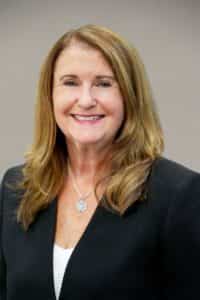Know
Tech Data tackles Covid-19’s ‘female recession’

It’s no secret that there’s not a lot of diversity in the technology industry.
The Covid-19 pandemic has both exacerbated the issue and provided opportunities to change the status quo, according to three leaders at Tech Data Corp.
The three leaders – all women — were among the panelists who took part in the first day of Tampa Bay Tech’s poweredUP Virtual Summit, a two-day interactive tech conference spotlighting innovative thought leaders and fast-growing teams and companies in the Tampa-St. Petersburg area. Top executives from Zoom (Nasdaq: ZM) and Salesforce (NYSE: CRM), as well as local participants such as Tech Data, Jabil (NYSE: JBL), Moffitt Cancer Center, AgileThought and Vology took part.
Related: What Zoom’s global CIO will say about the future of work at Tampa Bay Tech’s summit
Tech Data, a Clearwater-based IT distributor and one of the largest companies based in the Tampa-St. Petersburg area, has been an advocate for diversity in the workforce for many years.
Women made up 50.4 percent of the workforce in the United States in 2019, but only 31 percent of the workforce in the tech industry is made up of women and only 22 percent of IT leaders are female, said Joanne Persinger, senior vice president of enterprise delivery at Tech Data.

Joanne Persinger
And while women composed more than half the workforce last year, “We’re starting to worry that this will look like a one-hit wonder for a few years,” Persinger said. “Nearly 11 million jobs held by women disappeared in first half of the year. This year, female unemployment reached double-digits for the first time since 1948.”
Female unemployment hit 12 percent this year and was higher for Latina women at 15.3 percent and Black women at 14 percent. In contrast, unemployment among white men was 9 percent, Persinger said.
“In addition to being laid off, in a lot of two-parent households, somebody needed to make a decision about who would stay home to make sure kids were educated when day care and schools closed. A much higher number of women versus men stayed home and had to leave their jobs,” she said.
Ashley Brown, vice president of portfolio management and IT governance at Tech Data, stayed on the job when the pandemic hit, but found herself juggling much more.
“Due to the pandemic, overnight I became a 2nd and 4th grade teacher, PE coach, principal and cafeteria worker, in addition to my Tech Data responsibilities and role as a parent,” Brown said. “At first it was difficult to balance but I changed my mindset and reminded myself to focus on real priorities.”

Ashley Brown
Brown said she concentrated on what was in her control, versus what was out of her control. She set realistic expectations and proactively determined her priorities for the day.
“I could be completely overwhelmed or I could take charge of these challenges and overcome them and make this tough balance a meaningful experience,” she said.
Standing by women workers at Tech Data also required a change of mindset by the company’s leaders.
“We began by accepting and understanding the need to be more flexible regarding where our colleagues work from, the hours they work and time blocks to manage work-life balance,” Brown said.
For instance, if a team leader knows a colleague who is working from home has to pick up their children at 2 p.m., they shouldn’t schedule meetings at that time. Instead of scheduling one hour meetings, Brown suggested scheduling 45-minute meetings and allowing workers to spend the extra 15 minutes helping children at home. It’s also important to remind people to take time off.
“The challenging balance is one of the reasons the female recession is occurring, but I feel we can make a difference by showing our workforce they are valued, we are supportive, and juggling multiple responsibilities will not be a reason for them to lose pace in the workforce. It’s critical we set this tone from the top,” Brown said.

Tammy Gardner
The pandemic has provided opportunities for companies to close the diversity gap, said Tammy Gardner, vice president of enterprise diversity. She offered three takeaways:
- Challenge your candidate sourcing partners, including your HR departments, to demand diverse candidate pools. “More than ever, candidate pools can be expanded because of remote working. People don’t necessarily have to move.”
- Commit to hire the best candidates for the job. “Of course we want to source locally but that’s not always an option. We can look nationally or even globally.”
- Revisit internal practices. “Make sure promotions for both men and women are based on potential rather than having to prove themselves first.”
The Tampa Bay Tech poweredUP Virtual Summit continues Friday. One highlight will be a CEO2CEO discussion between Scott Price of A-LIGN and Greg Ross-Munro of Sourcetoad.







